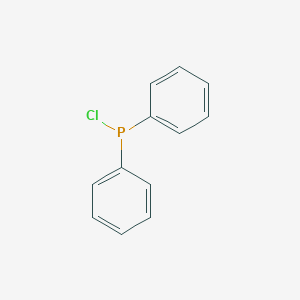The valve electric device is an indispensable device for realizing valve program control, automatic control and remote control. The movement process can be controlled by the stroke, torque or axial thrust. Since the working characteristics and utilization rate of the valve electric device depend on the type of valve, the working specification of the device and the position of the valve on the pipeline or equipment, the correct selection of the valve electric device prevents overload phenomenon (operating torque is higher than control) Torque) is crucial. In general, the basis for the correct selection of valve electric devices is as follows: Operating torque: The operating torque is the most important parameter for selecting the electric device of the valve. The output torque of the electric device should be 1.2 to 1.5 times the maximum torque of the valve. Operational thrust: There are two kinds of main structure of the valve electric device: one is that the thrust plate is not arranged, and the torque is directly output; the other is to configure the thrust plate, and the output torque is converted into the output thrust through the stem nut in the thrust plate. Number of rotations of the output shaft: The number of rotations of the output shaft of the valve electric device is related to the nominal diameter of the valve, the pitch of the valve stem, and the number of threads. It should be calculated according to M=H/ZS (M is the total rotation that the electric device should satisfy) Number of turns, H is the valve opening height, S is the stem drive thread pitch, and Z is the stem thread number). Stem Diameter: For multi-turn type open-end valves, if the maximum stem diameter allowed by the electric device cannot pass through the valve stem of the valve, it cannot be assembled into an electric valve. Therefore, the inner diameter of the hollow shaft of the electric device must be larger than the outer diameter of the stem of the open rod valve. For the partial rotary valve and the dark rod valve in the multi-turn valve, although the problem of the diameter of the stem is not considered, the diameter of the stem and the size of the keyway should be fully considered in the selection, so that the assembly can work normally. Output speed: If the opening and closing speed of the valve is too fast, it will easily cause water hammer. Therefore, the appropriate opening and closing speed should be selected according to different conditions of use. Valve electric devices have special requirements that must be able to limit torque or axial forces. Usually the valve electric device uses a torque limiting coupling. When the specifications of the electric device are determined, the control torque is also determined. Generally running in a predetermined time, the motor will not be overloaded. However, if the following conditions occur, the overload may be caused: first, the power supply voltage is low, the required torque is not obtained, and the motor stops rotating; second, the torque limiting mechanism is erroneously set to be greater than the stopped torque. Cause continuous excessive torque generation, so that the motor stops rotating; Third, intermittent use, the generated heat accumulation exceeds the allowable temperature rise of the motor; Fourth, for some reason, the torque limiting mechanism circuit fails, causing the torque to pass Large; five is the use of ambient temperature is too high, relative to the motor thermal capacity decreased. In the past, the protection of the motor was to use fuses, overcurrent relays, thermal relays, thermostats, etc., but these methods have their own advantages and disadvantages. For the variable load device of the electric device, there is no absolute and reliable protection method. Therefore, various combinations must be adopted, and there are two types that can be summarized: one is to judge the increase and decrease of the input current of the motor; the other is to judge the heat of the motor itself. In either case, the time margin given by the thermal capacity of the motor must be considered. Generally, the basic protection method of overload is: using a thermostat for overload protection of continuous or jog operation of the motor; using a thermal relay for the protection of the motor stall; and using a fuse or an overcurrent relay for a short circuit accident. Concerned about surprises Label: Problems to be paid attention to when purchasing electric valve devices Previous: How to choose the gear oil pump correctly Next: How to choose toxic and harmful gas detector Chlorodiphenylphosphine Basic Information
Chlorodiphenylphosphine Structure
Sensitive Air & Moisture Sensitive
Chlorodiphenylphosphine Application
Chlorodiphenylphosphine is used to introduce the diphenylphosphinyl moiety by aryl ortho-lithiation. It is also used as an intermediate to make antioxidants, flame retardants, stabilizers, catalysts, photoinitiators, and optical brighteners. Used as a halogenation reagent for the conversion of alcohols into halides, in the preparation of solid-phase reagent for the conversion of alcohols to alkyl halides. Chlorodiphenylphosphine CAS No.1079-66-9 Chlorodiphenylphosphine,Chlorodiphenylphosphine Oxide,Chlorodiphenylphosphine 31P Nmr,Chlorodiphenylphosphine Synthesis ShanDong YingLang Chemical Co.,LTD , https://www.sdylhgtrade.com
Product Name: Chlorodiphenylphosphine
CAS: 1079-66-9
MF: C12H10ClP
MW: 220.63
EINECS: 214-093-2
Mol File: 1079-66-9.mol

Melting point 14-16°C
Boiling point 320 °C(lit.)
density 1.229 g/mL at 25 °C(lit.)
storage temp. Store at R.T.
solubility Miscible with alcohol. Slightly miscible with ammonia.
form Liquid
color Colorless to yellow
Water Solubility Reacts violently